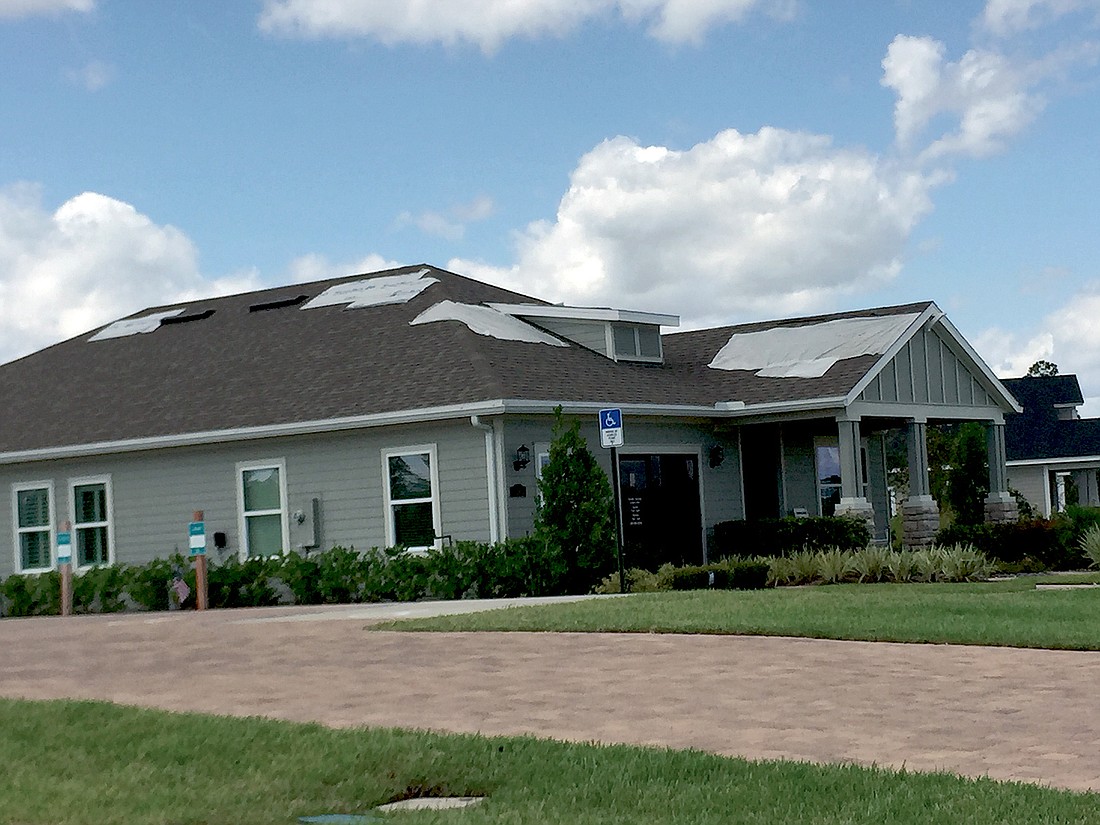
A month before my self-imposed copy deadline for this month’s edition of Realty-Builder, I had already written a column, one inspired by a visit to Jacksonville Mayor Lenny Curry’s office by the editorial staff of sister publication, the Daily Record.
That column became another casualty of Hurricane Irma. But that’s OK because it’s pretty much already written for next month, and in this business it’s always beneficial to have content “in the can” and ready for use.
I possess no profound wisdom to share about living through a hurricane, and all that implies. I was raised and lived my first 21 years in Central Florida, and I don’t recall ever being directly impacted by a hurricane during my youth. Before Irma, my only real encounter with a hurricane was while living in Charlotte in 1989, when Hugo blew through the Piedmont region of North Carolina still packing winds at thresholds just below hurricane strength hundreds of miles inland.
Nobody ever can be fully prepared for the havoc such a superstorm can wreak. That goes double for Piedmont- and Foothills-dwelling Carolinians, the vast majority of whose closest encounter with a cyclonic weather event was from across the living room on their television screens.
Hugo moved swiftly, so it was more of a wind than a rain event. Thick-trunked, heavy-branched, fully leafed trees in that region aren’t engineered for wind gusts of 99 miles per hour. Neither are windows in downtown skyscrapers. For obvious reasons, homes there are not built to hurricane-resistant standards.
Although the phrase “war zone” is overused, that was the best way to describe the appearance of streets that remained impassable for weeks as a large percentage of the massive, leafy canopy that blankets much of the city lay strewn across many roads. Huge trees lay on top of others, overwhelming the average chainsaw-wielding Samaritan.
Hugo’s approach toward the South Carolina coast was met largely with shrugs by Charlotteans. Even as we watched the storm lay waste to Charleston, its direct path up interstates 26 and 77 were of little concern. After all, we had the blanket of protection that a couple of hundred miles of pine forests and sandhills to take much of the bite out of the hurricane before it reached us during the darkness of night.
We’d experienced remnants of hurricanes before. A lot of rain, a few high wind gusts, soon a distant memory.
Nobody was prepared. Nobody stocked up on food or water or ice. Not too many owned chainsaws.
Nobody expected Hugo.
Hugo is still a big deal back in Charlotte. It made such an impression that the Charlotte Hornets NBA franchise, in response to a vote of the fans, named its mascot Hugo. A group of jugglers in Davidson, just north of Charlotte, commemorate Sept. 22 with its annual Hurricane Hugo Festival. Longtime residents still talk about the storm as if it happened last year, let alone in 1989.
Even now, many of the city’s beloved canopy of century-old willow oaks more easily succumb to periods of wind and rain, arborists squarely placing the blame on the weakening of the roots caused by Hugo nearly 30 years ago.
Stay or go?
Moving to Florida just a few months ago, I knew of the heightened hurricane risk. I also was comfortable that, with Matthew spinning through the area just a year ago, the odds against a repeat performance were in our favor.
Experience also tells me if the odds are 50-50, I have a 75 percent chance at getting it wrong.
Like most folks, we were apprehensive as Irma marched across the Atlantic, into the Caribbean and eventually up the west coast of Florida. Unlike our Hugo experience, though, there was time to prepare. And there was time to consider whether to stay or evacuate.
While living well outside the reasonable hurricane impact zone, it was easy to watch storm coverage sitting in a comfortable recliner, knowing that the next day the refrigerator would still be keeping food cold, the air conditioning would maintain a comfortable temperature and nothing would get in the way of watching Sunday’s games.
I would watch reports of people choosing to stay and ride out the storm, shaking my head in disbelief.
“Just leave, already,” I’d say, as if that’s such an easy decision.
Now I know how difficult it can be. We had reservations in Destin but had yet to decide whether or not to go. Watching the steady northward march of residents first from south, then central, Florida fleeing the path of Irma, the uncertainty of joining them and the challenges they were facing gave me a new perspective on the hurricane “fight or flight” impulse.
I learned it isn’t so easy to leave after all, even if you that’s what you want to do.
We got lucky with Irma. She tossed a few branches and pine cones into the backyard and knocked our power out for a little more than 12 hours. We know so many others were not so fortunate, both in south Florida and here at home.
But Floridians are resilient. We marveled at how quickly life began to return to normal for many; at how well prepared local governments were to respond to the damage; at how businesses that could do so quickly resumed operations.
In Charlotte, they still haven’t gotten over Hugo.
Northeast Florida will get over Irma.